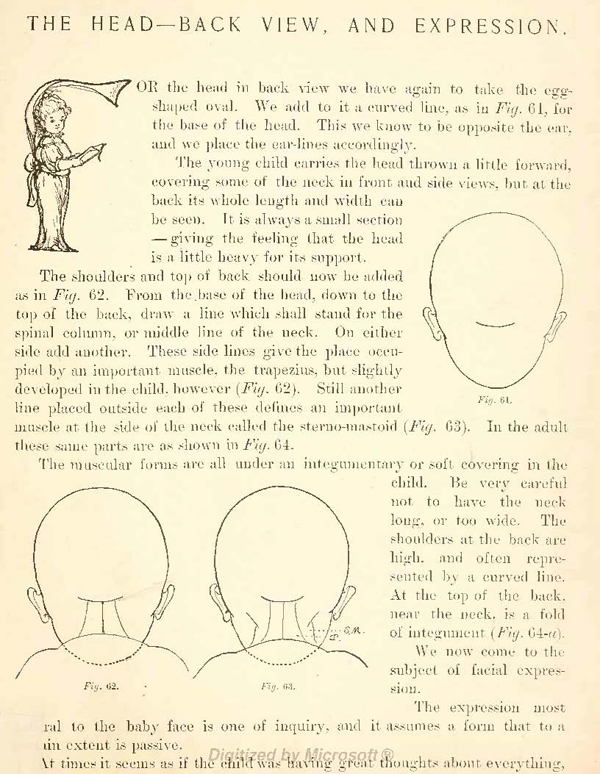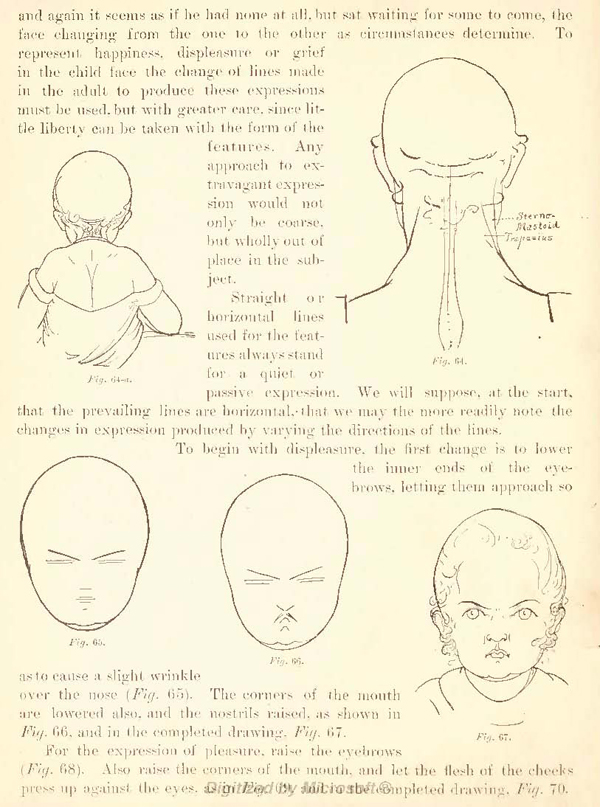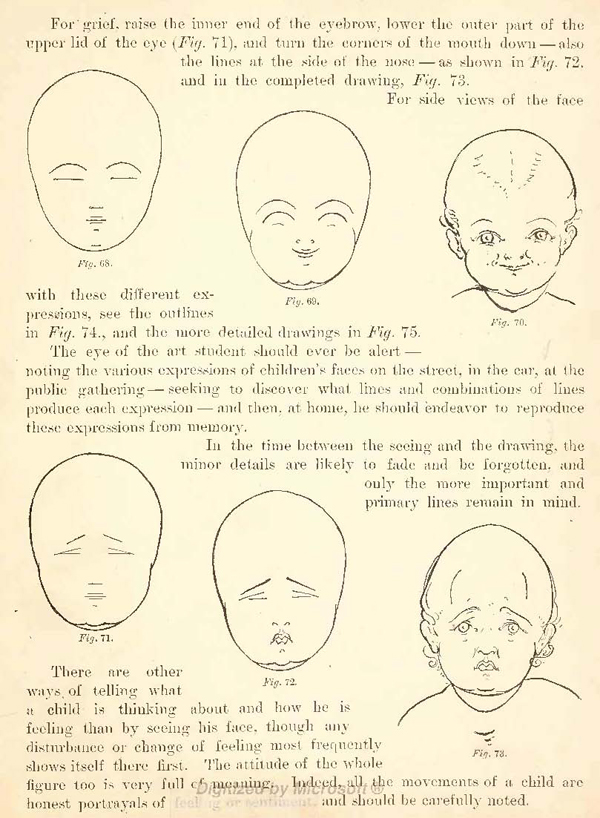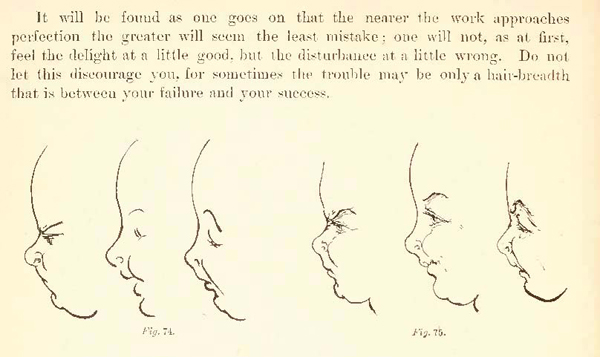Home > Directory of Drawing Lessons >How to Draw People > Drawing Kids > Drawing Heads, Back Views, and Facial Expressions
How to Draw Kids and Children from The Back with Facial Expressions and Emotions Drawing Lesson
|





[The above words are pictures of text, below is the actual text if you need to copy a paragraph or two]
THE HEAD BACK VIEW, AND EXPRESSION.
OR the head in back view we have again to take the egg-shaped oval. We add to it a curved line, as in Fig. 61, for the base of the head. This we know to be opposite the ear, and we place the ear-lines accordingly.
The young child carries the head thrown a little forward, covering some of the neck in front and side views, but at the back its whole length and width can be seen. It is always a small section giving the feeling that the head is a little heavy for its support.
The shoulders and top of back should now be added as in Fig. 62. From the.base of the head, down to the top of the back, draw a line which shall stand for the spinal column, or middle line of the neck. On either side add another. These side lines give the place occupied by an important muscle, the trapezius, but slightly developed in the child, however (Fig. 62). Still another line placed outside each of these defines an important muscle at the side of the neck called the stereo-mastoid (Fig. 63). In the adult these same parts are as shown in Fig. 64.
The muscular forms are all under an integumentary or soft covering in the child. Be very careful not to have the neck long, or too wide. The shoulders at the back are high, and often represented by a curved line. At the top of the back, near the neck, is a fold of integument (Fig. 64-a).
The expression most be natural to the baby face is one of inquiry, and it assumes a form that to a tin extent is passive.
Sometime it seems as if the child was having great thoughts about everything, and again it seems as if he had none at all. but sat waiting for some to come, the face changing from the one to the other as circumstances determine. To represent happiness, displeasure or grief in the child face the change of lines made in the adult to produce these expressions must he used, but with (Treat with care, since little liberty can be taken with the form of the features.
The eye of the art student should ever be alert —noting the various expressions of children's faces on the street, in the car, at the public gathering seeking to discover what lines and combinations of lines produce each expression — and then, at home, he should endeavor to reproduce these expressions from memory.
In the time between the seeing and the drawing, the minor details are likely to fade and be forgotten, and only the more important and primary lines remain in mind.
There are other ways, of telling what a child is thinking about and how he is feeling than by seeing his face, though any disturbance or change of feeling most frequently shows itself there first.
It will be found as one goes on that the nearer the work approaches perfection the greater will seem the least mistake; one will not, as at first, feel the delight at a little good, but the disturbance at a little wrong. Do not let this discourage you, for sometimes the trouble may be only a hair-breadth that is between your failure and your success.




